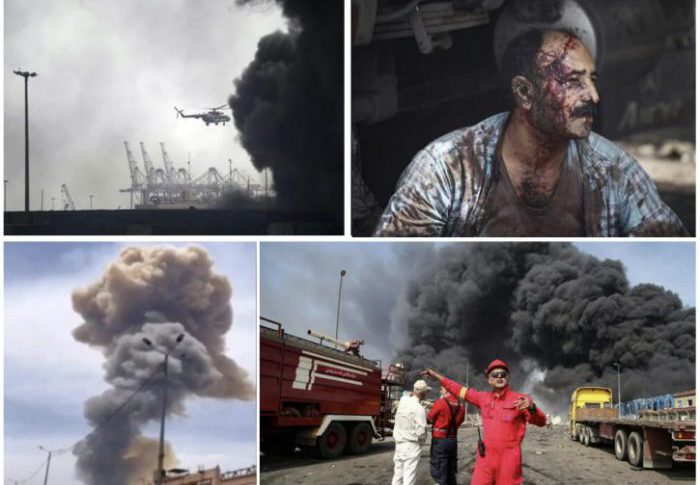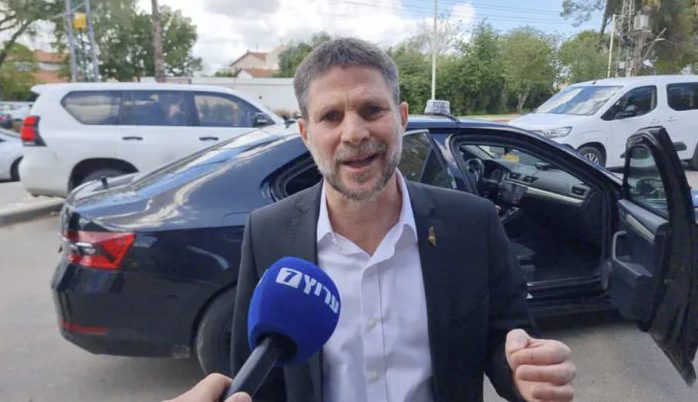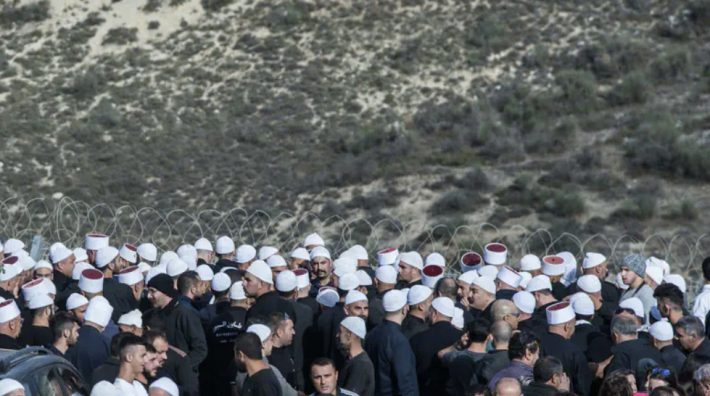Iran claims blast linked to shipment of chemicals used to make fuel for ballistic missiles; coincides with US-Iran nuclear talks; same port hit by suspected Israeli cyber attack in 2020.
Copyright Law)
At least five people were killed and more than 700 injured in a powerful explosion on Saturday that ripped through a vital port in southern Iran, state media said, with the blast purportedly linked to a shipment of a chemical ingredient used to make missile propellant.
The blast, which the head of the Red Crescent Society’s Relief and Rescue described as “massive explosion,” occurred at Shahid Rajaee, the country’s largest commercial port, located in Hormozgan province on Iran’s southern coast.
The customs office at the port said in a statement carried by state TV that the blast probably resulted from a fire that broke out at the hazmat and chemical materials storage depot.
“The cause of the explosion was the chemicals inside the containers,” Hossein Zafari, a spokesperson for Iran’s crisis management organization, told Iran’s ILNA news agency.
In March, the port took in a shipment of “sodium perchlorate rocket fuel,” the private security firm Ambrey said. The fuel is part of a shipment from China by two vessels to Iran, first reported in January by the Financial Times. The fuel was going to be used to replenish Iran’s missile stocks, which had been depleted by its direct attacks on Israel during the war with Hamas in the Gaza Strip.“The cause of the explosion was the chemicals inside the containers,” Hossein Zafari, a spokesperson for Iran’s crisis management organization, told Iran’s ILNA news agency.
In March, the port took in a shipment of “sodium perchlorate rocket fuel,” the private security firm Ambrey said. The fuel is part of a shipment from China by two vessels to Iran, first reported in January by the Financial Times. The fuel was going to be used to replenish Iran’s missile stocks, which had been depleted by its direct attacks on Israel during the war with Hamas in the Gaza Strip.
“The fire was reportedly the result of improper handling of a shipment of solid fuel intended for use in Iranian ballistic missiles,” Ambrey said.
Ship-tracking data analyzed by The Associated Press put one of the vessels believed to be carrying the chemical in the vicinity in March, as Ambrey said. Iran hasn’t acknowledged taking the shipment. The Iranian mission to the United Nations didn’t immediately respond to a request for comment on Saturday.
It is unclear why Iran would not have moved the chemicals from the port, particularly after the Beirut port blast in 2020, in which more than 200 people were killed in a chemical explosion. However, Israel has targeted Iranian missile sites where Tehran uses industrial mixers to create solid fuel, including during its response to a massive Iranian missile barrage launched at Israel last October.
There were no immediate allegations of blame issued by Iran against external actors.
There was no response from the Israeli military or Prime Minister Benjamin Netanyahu’s office when asked for comment on whether Israel was in any way involved in the explosion. An Israeli official quoted by Channel 12 news denied any Israeli involvement in the explosion.
Citing local emergency services, state television reported after Saturday’s explosion that many “people have been injured, dozens of whom have been transferred to nearby medical centers,” revising earlier tolls.
“The explosion occurred in a part of the Shahid Rajaee port dock, and we are extinguishing the fire,” state TV quoted Esmaeil Malekizadeh, a regional port official, as saying.
Efforts were ongoing to extinguish a significant fire, with the port’s customs saying that trucks were being evacuated from the area and that the container yard where the explosion occurred likely contained “dangerous goods and chemicals.”
State TV said “negligence in handling flammable materials was a contributing factor” in the explosion.
Shahid Rajaee, more than 1,000 kilometers (620 miles) south of the capital Tehran, is the most advanced container port in Iran, according to the official IRNA news agency.
It is located 23 kilometers west of Bandar Abbas, the Hormozgan provincial capital, and north of the Strait of Hormuz through which a fifth of the world’s oil output passes.
Footage on state TV showed thick columns of black smoke billowing from the port area where many containers are located.
As emergency services dispatched rapid response teams to the port, First Vice President Mohammad Reza Aref ordered an investigation to determine the cause of the blast and assess the extent of the damage, according to the ISNA news agency.
Mehrdad Hassanzadeh, head of Hormozgan province’s crisis management authority, told state TV that “the cause of this incident was the explosion of several containers stored in the Shahid Rajaee Port wharf area.”
“We are currently evacuating and transporting the injured to nearby medical centers,” he said. The explosion was so powerful that it could be felt and heard some 50 kilometers away, Fars news agency reported, with residents saying they could feel the ground shake even at a distance from the port.
“The shockwave was so strong that most of the port buildings were severely damaged,” Tasnim news agency reported.
Social media videos showed black billowing smoke after the blast. Others showed glass blown out of buildings kilometers (miles) away from the epicenter of the explosion.
Industrial accidents happen in Iran, particularly at its aging oil facilities that struggle for access to parts under international sanctions. But Iranian state TV specifically ruled out any energy infrastructure as causing or being damaged in the blast.
The state-owned National Iranian Oil Products Distribution Company said in a statement carried by local media that “the explosion at Shahid Rajaee Port has no connection to refineries, fuel tanks, distribution complexes or oil pipelines.”
It added that “Bandar Abbas oil facilities are currently operating without interruption.” The rare explosion comes several months after one of Iran’s deadliest work accidents in years.
A coal mine blast in September caused by a gas leak killed more than 50 people in Tabas, in Iran’s east, prompting authorities to announce public mourning.
The blast happened as Iran and the United States met Saturday in Oman for the third round of negotiations over Tehran’s rapidly advancing nuclear program.
In 2020, computers at the same port were hit by a cyberattack that caused massive backups on waterways and roads leading to the facility. The Washington Post had reported that Iran’s arch-foe, Israel, appeared to be behind that incident as retaliation for an earlier Iranian cyberattack.
Iran and the US were Saturday holding further talks aimed at reaching a deal to prevent Iran from attaining nuclear weapons. Israel, which has demanded that any deal fully dismantle Iran’s nuclear facilities, is reportedly concerned that the US is rushing toward a “bad deal” that will not block the regime’s path to the bomb.
In an interview with Times magazine this week, US President Donald Trump said the talks were making good progress.
Asked by Time about reports that he recently quashed Israeli proposals for a series of joint strikes on Iranian nuclear facilities, Trump said that he didn’t block Israel’s plans outright: “I didn’t make it comfortable for them, but I didn’t say no,” Trump said. “Ultimately, I was going to leave that choice to them, but I said I would much prefer a deal than bombs being dropped.”
Asked if he was worried about being “dragged in” to a war with Iran by Netanyahu, Trump said the Israeli leader “may go into a war. But we’re not getting dragged in.”
Pressed on whether that meant the US would sit out an Israeli attack on Iran, Trump elaborated: “You asked if he’d drag me in, like I’d go in unwillingly. No, I may go in very willingly if we can’t get a deal. If we don’t make a deal, I’ll be leading the pack,” said Trump.
On August 4, 2020, a huge explosion killed over 200 people and injured 7,000 at Beirut port in Lebanon, It was triggered by the ignition of 2,750 tonnes of improperly stored ammonium nitrate, which blew up after a fire in a nearby warehouse.





